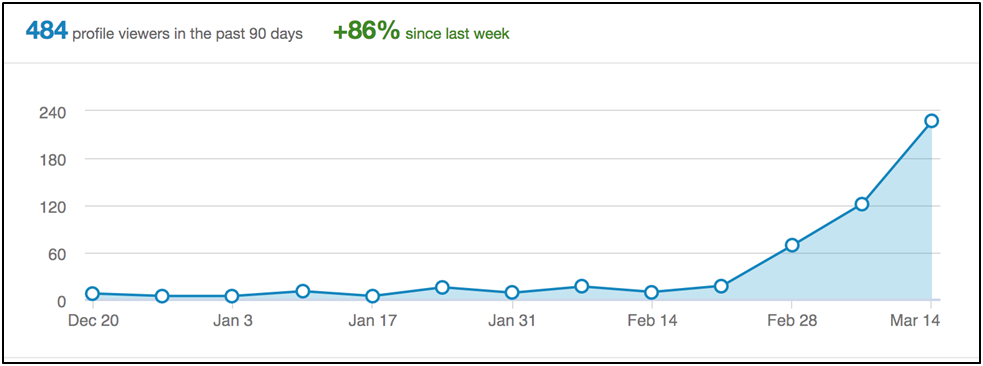
I have spent years working with a wide range of businesses from Fortune 500s to local mom & pops, generating sales and leads online. One thing that perplexed me over and over again was “Why isn’t LinkedIn a goldmine for new business?!”
Is it because:
- The ad products just aren’t great? – Maybe
- People don’t come to LinkedIn consistently enough? – Possibly
- Buyers and decision makers aren’t on LinkedIn? – Definitely not. With the help of a linkedin software it’s even easier these days.
I was unsure, but I knew there had to be a better way, so I decided to figure out how I could generate leads for my business through my LinkedIn network.
Is there an opportunity to generate business from LinkedIn?
First things first, let’s take a step back and evaluate if this is even an opportunity worth pursuing.
We all know that LinkedIn is the world’s largest database of business professionals, but when you break this down into actual numbers, the size of the opportunity becomes clear. According to LinkedIn:
- There are now 500 million business professionals on their network
- 100 million of those users are active daily
- 40 million users are in decision-making roles
That’s 40 million potential targets on the LinkedIn network who are in positions to make business and buying decisions. This leaves little doubt that there is a large audience, which presents the opportunity to generate new business from the LinkedIn platform if a smart strategy is employed.
Strategy parameters
Now I knew there was an opportunity, so it was time to see if I could find the right strategy. It is important to determine what the right strategy is, so for me that meant it met the following parameters:
- Generated leads consistently
- Was repeatable and not too time-consuming
- No ad spend required
- No spamming
The process
Here is the simple three-step process I came up with that has been generating very strong results without a large time commitment and no money spent on advertising. I have been repeating this process two to four times a week, depending on my workload.
Step 1: Target list
The first step is building a targeted list of potential leads. This requires you to first determine who your ideal leads are. If you’re using LinkedIn’s Sales Navigator tool, you are given 22 different filter categories to refine the LinkedIn database into your ideal target list. These categories include: Geography, Keywords, Relationship, Industry, Postal Code, Job Function, Job Title, Seniority, Years in Position, Years at Company, Years of Experience, Company, Company Headcount, and more.

It is important to build your list with a few things in mind:
- Although there are 22 filters, do not feel like you need to use them all. We typically use some combination of geography, job title, industry, and company headcount.
- Build your lists in a way that allows you to send connection requests that you can personalize with something in common with the recipient. For example, you are both in the same city, went to the same school, etc.
- Also build your list with prioritization in mind. If certain geographies are better for your business, build a separate list for those so you can work those areas first.
Step 2: Connection request
Once we have our list(s) built, we then go through and send personalized connection requests to those individuals and establish a commonality.

It is important to personalize these requests and not use the standard LinkedIn message of “I’d like to add you to my professional network on LinkedIn.” This is boring and gives no context to why someone would want to connect with you. Address them personally to stand out from the other connections and give them a reason to connect. Personalized connection requests will drastically increase the chances of someone accepting.
Step 3: Message
After we send a connection request we wait to see who accepts those requests. Waiting to let our targets take action avoids spamming anyone who isn’t interested in interacting with us. When someone accepts our connections request, Step 3 is to now send them a message.
This message should thank them for connecting and introduce an idea of how you can provide each other value or start a conversation. These messages shouldn’t be overly salesy, but merely look to start a conversation and continue to grow the relationship with your target.
If someone doesn’t respond after a few days, a follow-up message may be appropriate as well, but don’t push too much. If someone isn’t responding, they probably aren’t interested in talking.
My results
In conclusion, I want to give you an idea of the results I saw from running this process in my business over the last year. I didn’t know what to expect going in, but I was really excited with about I saw:
- My profile views went up 1200%.
- I got about 1,500 new high value connections added to my network.
- My messages to new connections saw a 10-20% response rate.
- My business has grown by 3x without spending anything on advertising.

If you are have questions or want to discuss my experience using LinkedIn to grow my business, email me at tom@revdigital.io.




